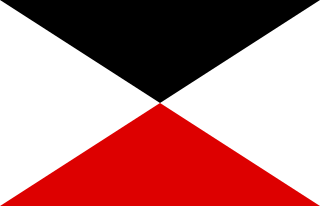You can help expand this article with text translated from the corresponding article in German. (March 2024)Click [show] for important translation instructions.
|
| XIV Army Corps XIV. Armee-Korps | |
|---|---|
 Flag of the Staff of a Generalkommando (1871–1918) | |
| Active | 30 September 1870 - March 1871 1 July 1871 - 1919 |
| Country | |
| Type | Corps |
| Size | Approximately 44,000 (on mobilisation in 1914) |
| Garrison/HQ | Karlsruhe/Werderpalais, Bismarckstraße 2 |
| Patron | Grand Duke of Baden |
| Shoulder strap piping | Red |
| Engagements | Franco-Prussian War |
| Insignia | |
| Abbreviation | XIV AK |
The XIV Army Corps / XIV AK (German : XIV. Armee-Korps) was a corps level command of the German Army before and during World War I. It was, effectively, also the army of the Grand Duchy of Baden, which, in 1871, had been integrated into the Prussian Army command structure, as had the armies of most German states. Both divisions and the bulk of the corps' support units were from the grand duchy. The corps was established in 1870, after the Siege of Strasbourg. [1]
Contents
- Franco-Prussian War
- Re-formation
- Peacetime organisation
- World War I
- Organisation on mobilisation
- Combat chronicle
- Commanders
- See also
- References
- Bibliography
It was assigned to the V Army Inspectorate, [2] which became the 7th Army at the start of the First World War. It was still in existence at the end of the war [3] as part of the 18th Army, Heeresgruppe Deutscher Kronprinz on the Western Front. [4]
